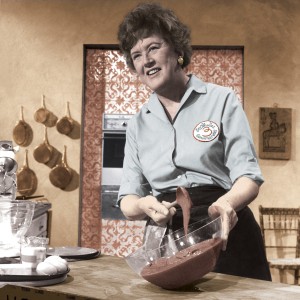 The WTTW documentary movie on Driehaus prizewinner Pier Carlo Bontempi, “A Taste for The Past,” begins with food, a lunch in the architects office in Parma. The analogy between architecture and cooking has always struck me as compelling: they both combine practicality with taste, they both transform physical materials, and in both the eater/user is at the center of the experience. Food needs to be cookable (buildable) and edible (comfortable). There is innovation in cooking—nouvelle cuisine, foams, fusion—yet all cuisines have a base that, for most people, remains the foundation of everyday eating. The parallels extend to education: the novice cook starts by learning how to slice onions (remember that scene in Julia and Julia?), not by actually cooking, and needs to master the omelette before moving on to haute cuisine. There are cooking fads, but ultimately all cooking is founded in tradition, whose rich variety is the very essence of food. Marcella Hazan does not invent, she guides us through the Italian tradition. The architectural parallels are self-evident. There are traditions to be learned, techniques to be mastered. Taste needs to be cultivated. Variety is key; there are many foods; there is no morality in food, pace vegans. Repetition and replication, not invention, are the essence of cooking. And also of architecture—or should be.
The WTTW documentary movie on Driehaus prizewinner Pier Carlo Bontempi, “A Taste for The Past,” begins with food, a lunch in the architects office in Parma. The analogy between architecture and cooking has always struck me as compelling: they both combine practicality with taste, they both transform physical materials, and in both the eater/user is at the center of the experience. Food needs to be cookable (buildable) and edible (comfortable). There is innovation in cooking—nouvelle cuisine, foams, fusion—yet all cuisines have a base that, for most people, remains the foundation of everyday eating. The parallels extend to education: the novice cook starts by learning how to slice onions (remember that scene in Julia and Julia?), not by actually cooking, and needs to master the omelette before moving on to haute cuisine. There are cooking fads, but ultimately all cooking is founded in tradition, whose rich variety is the very essence of food. Marcella Hazan does not invent, she guides us through the Italian tradition. The architectural parallels are self-evident. There are traditions to be learned, techniques to be mastered. Taste needs to be cultivated. Variety is key; there are many foods; there is no morality in food, pace vegans. Repetition and replication, not invention, are the essence of cooking. And also of architecture—or should be.

